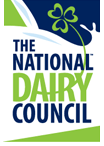Dairy Research
April 23, 2012
Research is a big part of helping agriculturalists produce as efficiently as possible. With growing populations, it is becoming necessary for farmers to be as efficient as possible to keep up with rising demands and changing economies. Universities and research facilities all over the world are working to formulate feed rations and conditions to maximize production and health of production plants and animals. The results are then passed on to the agriculturalists to be incorporated into their practices.
For example, Penn State has an excellent dairy research facility--most notably in dairy nutrition research. This research is used to help better understand the functions of a cow's unique digestive system to maximize absorption of nutrients. Have you heard of cows contributing to greenhouse gas emission with their methane gas release? Penn State is researching this, too! One of my favorite labs in my animal science class was to the PSU research facility because I was given the opportunity to reach my arm into a live cow's stomach. Rumen fistulas is a research technique implanted in a cow's side that safely and painlessly allows access to the cow's rumen (stomach compartment). With this access they can observe and test the feed in different stages as it passes through the cow's system.
Rumen Fistula in a grazing cow
Research is a huge part in the progress of the dairy industry, so I was curious to see if Ireland was making any progress in dairy research. It turns out that Teagasc, Ireland's Agriculture and Food Development Authority, has research farms all over Ireland to take advantage of different conditions and soil types.
| Research Farms | ||||
|---|---|---|---|---|
| Farm Name | Research Focus | Location | Farm Area (ha) | Cows (variable) |
| Ballydague | Crossbreed Evaluation | Co. Cork | 93 | 167 |
| Ballyhaise | Regional Milk Production | Co. Cavan | 47 | 97 |
| Curtins | Farm Systems | Co. Cork | 48 | 140 |
| Kilworth | Environmental Research | Co. Cork | 93 | 100 |
| Moorepark | Component Research | Co. Cork | 100 | 300 |
| Solohead | Nutrient Use Efficiency | Co. Tipperary | 52 | 95 |
| Johnstown Castle | Winter Milk | Co. Wexford | 30 | 80 |
The Johnstown herd, for example, conducts research in maximizing the herd efficiency of nutrition systems, pasture management strategies, and fertility performance of autumn-calving herds since many herds in Ireland are seasonal producers. Because many herds in Ireland still graze their cattle, I was really interested to see that they are doing research in replenishing and managing their grass systems while also improving their production. At the Ballyhaise farm, their goal is to maximize profitability per hectare for sustainable pasture-based dairy systems.
Cows grazing at the Moorepark research farm
Citations:
Teagasc: Agriculture and Food Development Authority. (2012). Retrieved April 23, 2012, from Moorepark
Research Farms: http://www.agresearch.teagasc.ie/moorepark/researchfarms.asp







